Discover 5 hidden attractions, cool sights, and unusual things to do in Weston (United States). Don't miss out on these must-see attractions: Golden Ball Tavern Museum, Spellman Museum of Stamps & Postal History, and Norumbega Tower. Also, be sure to include Case Estates in your itinerary.
Below, you can find the list of the most amazing places you should visit in Weston (Massachusetts).
Table of Contents
Golden Ball Tavern Museum
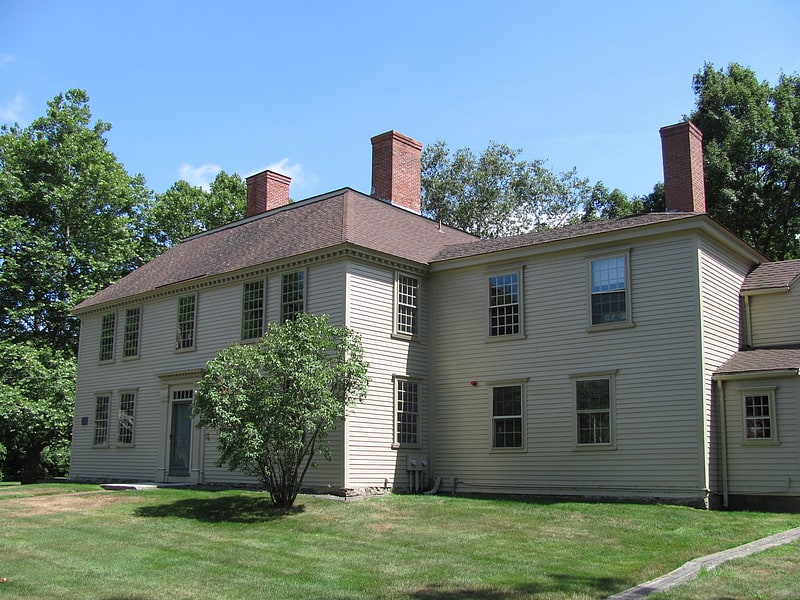
Museum in Weston, Massachusetts. The Golden Ball Tavern is a historic tavern, now a museum, located in Weston, Massachusetts. Built in 1768, it is one of the town's finest examples of Late Georgian architecture. It also played a pivotal role in local activities during the American Revolution, due to its Loyalist tavern keeper. The tavern was listed on the National Register of Historic Places in 1972, and was included in Weston's Boston Post Road Historic District in 1983.[1]
Address: 662 Boston Post Rd, 02493-1511 Weston (Weston)
Spellman Museum of Stamps & Postal History
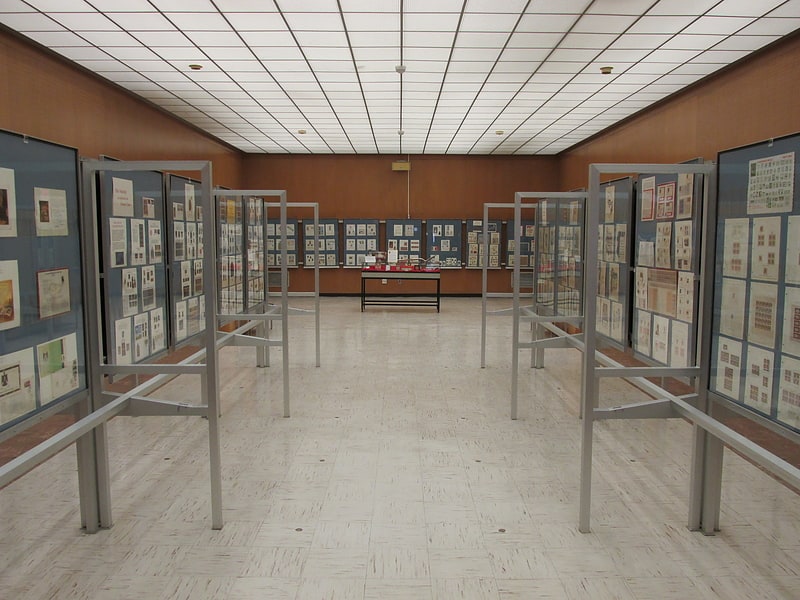
The Spellman Museum of Stamps & Postal History, also commonly known as the Cardinal Spellman Philatelic Museum, is a not-for-profit organization dedicated to the appreciation of diversity through the medium of postage stamps and postal history.[2]
Address: 241 Wellesley St, 02493 Weston (Weston)
Norumbega Tower
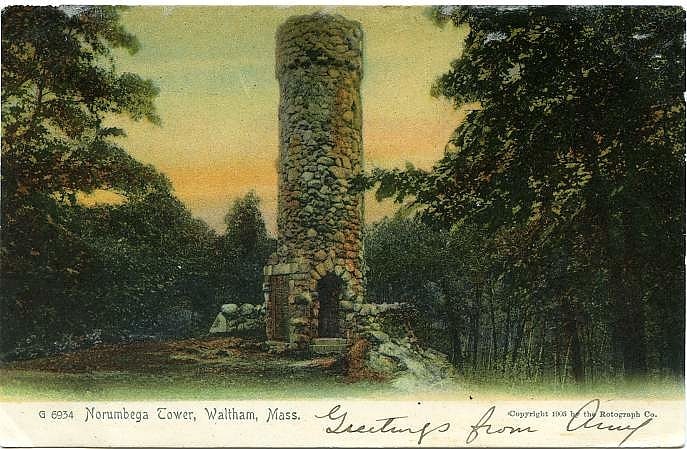
Tower in Weston, Massachusetts. The Norumbega Tower is a stone tower erected by Eben Norton Horsford in 1889 to mark the supposed location of Fort Norumbega, a legendary Norse fort and city. It is located in Weston, Massachusetts at the confluence of Stony Brook and the Charles River. The tower is approximately 38 feet tall, composed of mortared field stones with a spiral stone staircase. There is no evidence, archaeological or otherwise, to support the assertion that there were Norse settlements anywhere in New England.
Eben Norton Horsford was convinced that the Eastern Algonquian word 'Norumbega', which has been taken to mean the general region that is now coastal New England, was derived from 'Norvega', meaning Norway. A prominent stone plaque on the tower relates to Norse explorers from the Icelandic sagas. Horsford believed Norumbega to be Vinland. The construction of the tower was accomplished four years before Horsford's death.
Horsford's beliefs and tower influenced the naming of Norumbega Park, a well-known recreational complex located across the river in Newton that operated from 1897 to 1964.[3]
Case Estates
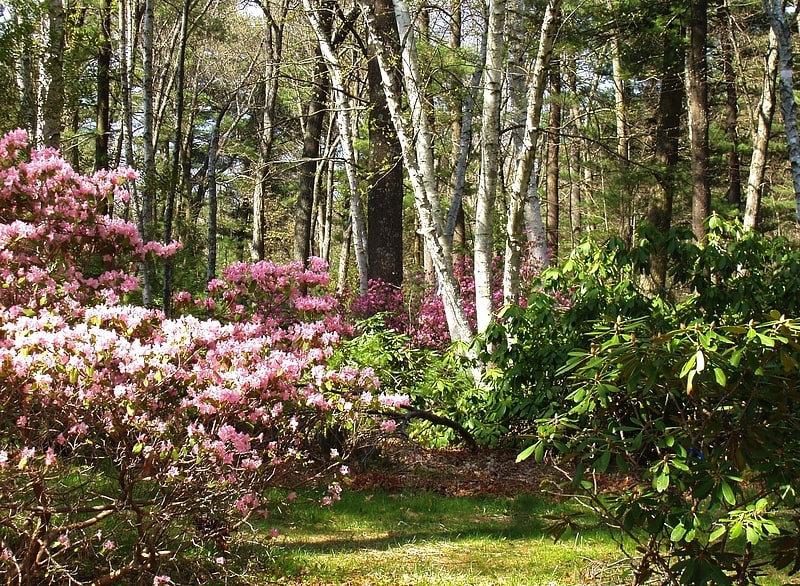
The Case Estates is a botanical garden located at 135 Wellesley Street, Weston, Massachusetts. Measuring 65 acres, the estates were at one time the active plant nurseries of the Arnold Arboretum.
The estates began in 1863 when James Case acquired its core property. From 1909 onwards his daughter, Miss Marian Roby Case, acquired adjoining property to establish Hillcrest Farms, which she operated from 1909 to 1942 as an experimental fruit and vegetable farm intended to "work up the scientific side of agriculture and provide summer employment and practical education for local youth." In 1942 she left the estate to Harvard University's Arnold Arboretum, which subsequently sold most of its houses. The Case family mansion is now used as Weston school offices.
Today the property is a semi-private reservation with lovely gardens and rare plant specimens. The majority of the site is an evergreen forest in semi-natural state, with pleasant walking trails. It also contains a fine rhododendron display garden maintained by the Massachusetts Chapter of the American Rhododendron Society.
One interesting feature of the property is its remarkable stone wall, which in 1911 was a birthday present from Miss Case to her sister Louisa. It is roughly 10 feet (3.0 m) high, up to 6 feet (1.8 m) thick, and 200 feet (61 m) long. It has been described as "the largest free-standing dry wall in New England."
In 2006, Harvard University made the decision to sell the property, and on November 8, a Special Town Meeting of the Town of Weston voted to buy the estate for $22.5 million. Selectmen have said that the town may sell off as many as 10 parcels to recoup part of the cost.
The discovery of contaminants, dating back to 1900 when the land was used as an apple orchard, and disagreements over the remediation plan stalled the acquisition. In March 2015, the Arboretum and the Town of Weston announced that an agreement had been reached that allows for the sale of the Case Estates to the Town of Weston.[4]
Rev. Samuel Woodward House
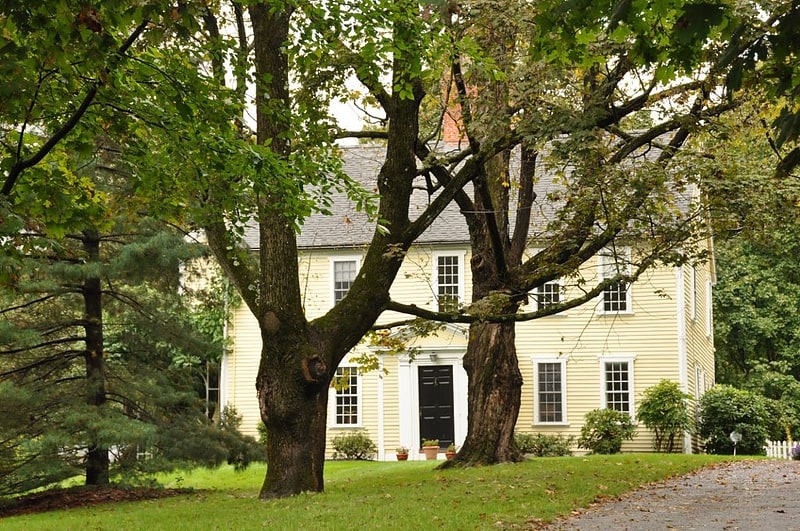
The Rev. Samuel Woodward House is a historic house located at 19 Concord Road in Weston, Massachusetts. Built in 1753, it is a well-preserved example of mid-18th century Georgian architecture. It has also been home to a succession of people significant to the history of the town. It was listed on the National Register of Historic Places in 1976, and was included in Weston's Boston Post Road Historic District in 1983.[5]